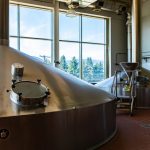Beer, a beverage enjoyed globally for centuries, is a delicate balance of water, malted barley, hops, and yeast. This harmonious concoction, however, is susceptible to spoilage, which can compromise its flavor, aroma, and overall quality. Beer spoilage can occur at various stages of the brewing and distribution processes, and understanding its causes, detection methods, and prevention strategies is crucial for maintaining the integrity of this beloved beverage.
Causes of Beer Spoilage
Microbial contamination is a major contributor to the spoilage of beer. Various microorganisms are known which cause this phenomenon.
- Wild Yeasts and Bacteria: Contamination by wild yeasts such as Brettanomyces and lactic acid bacteria can introduce off-flavors and aromas, leading to sour or funky beer.
- Zymomonas mobilis is a yeast that can tolerate oxygen but will easily grow under anaerobic conditions. It can ferment fructose and glucose but not maltose.
The Gram positive bacteria involved in spoilage such as rods and cocci are mainly the Lactobacilli but can include some Micrococcus and Bacillus species. All these spoilage bacteria are defined by being able to grow in beer and thus spoil it because they can resist hop bitter compounds such as the iso-α-acids and isohumulones.
The Lactic acid bacteria are the most common brewery spoilage microorganisms. Within this group are the two main genera of the Lactobacilli themselves and the coccoid Pediococci. There is a third genus called the Leuconostoc which mainly spoils wine rather beer.
The Pediococcus is not really involved in spoilage top fermented beers but is common in bottom-fermented beer.
- Acetic Acid Bacteria: Acetobacter, especially Acetobacter oxydans is a type of bacteria, that produces acetic acid, causing a vinegary taste in beer.
Oxygen Exposure
Oxygen is a double-edged sword in brewing. While oxygen is essential during certain stages of brewing, excessive exposure post-fermentation can lead to oxidative reactions, resulting in off-flavors like cardboard or sherry-like notes.
Temperature Fluctuations
Fluctuations in temperature during fermentation or storage can impact the stability of beer. High temperatures can accelerate the aging process, leading to the development of undesirable flavors.
Contaminated Equipment
Poorly sanitized brewing equipment can introduce unwanted microorganisms, compromising the quality of the beer. Thorough cleaning and sanitation practices are vital to prevent contamination.
Light Exposure
UV light can cause a reaction between hop compounds and sulfur compounds, leading to “skunky” or light-struck flavors. Brewers often use brown bottles or cans to protect beer from light.
Inadequate Filtration
Insufficient filtration can result in the presence of yeast or particulate matter in the final product, affecting clarity and taste.
Detection of Beer Spoilage
- Sensory Evaluation:
Trained sensory panels play a crucial role in detecting off-flavors and aromas. Common descriptors include sourness, mustiness, diacetyl (buttery flavor), and phenolic off-flavors.
- Analytical Testing:
Laboratory tests, including microbiological analysis and chemical assays, can identify specific spoilage organisms or compounds. This includes testing for the presence of acetic acid, diacetyl, and other spoilage markers.
In recent years beer spoilage microorganisms are detected using the polymerase chain reaction (PCR) technology. DNA fragments are analysed by electrophoresis which is then amplified by the polymerase chain reaction. The detection of specific species such as Lactobacillus brevis is based on the development of specific primers (Tsuchiya et al., 2018).
- Packaging Inspection
Examining packaging for leaks, damage, or issues with seals can prevent oxygen exposure and subsequent oxidation.
- Quality Control Checks
Regular checks throughout the brewing process, from raw materials to finished product, can identify deviations from quality standards early on.
Prevention of Beer Spoilage
- Good Brewing Practices:
- Implementing strict sanitation protocols for equipment, tanks, and facilities is fundamental in preventing microbial contamination.
- Quality Ingredients:
- Using high-quality ingredients, especially yeast strains with low risk of mutation or contamination, can contribute to the overall stability of the beer.
- Proper Filtration and Pasteurization:
- Adequate filtration and pasteurization processes can eliminate or reduce the presence of spoilage organisms, ensuring the microbiological stability of the beer.
- Membrane stabilization has been in vogue at many times but most bottlers desire a shelf-life insurance from microbial contamination by filtering the beer through 0.45 and 0.65 micron microporous membrane filters.
- The choice of pore size is critical. The choice is a trade-off between assurances that the microbes are retained versus the economics of using such a step.
- Controlled Fermentation:
- Maintaining optimal fermentation temperatures and conditions can prevent the overgrowth of undesirable microorganisms.
- Oxygen Management:
- Minimizing oxygen exposure during brewing, packaging, and storage is crucial. Modified atmosphere packaging or inert gas flushing can be employed to displace oxygen.
- Light Protection:
- Using dark-colored bottles or cans and minimizing exposure to UV light helps prevent the development of light-struck flavors.
- Monitoring and Testing:
- Regularly monitoring brewing processes and conducting quality tests can help identify and address potential issues before they lead to spoilage.
- Educating Personnel:
- Ensuring that brewery staff are well-trained in hygiene practices and understand the importance of quality control is vital for preventing spoilage.
We can finally say that the prevention of beer spoilage requires a comprehensive approach, encompassing every stage of the brewing process. From the careful selection of ingredients to rigorous quality control measures, brewers must be vigilant in maintaining the integrity of their product. Advances in technology and analytical methods continue to enhance the industry’s ability to detect and prevent spoilage, ensuring that beer enthusiasts around the world can continue to enjoy high-quality, flavorful brews. By understanding the causes of spoilage and implementing effective prevention strategies, brewers can uphold the time-honored tradition of producing exceptional beer.
References
Tsuchiya, Y., Kaneda, H., Kano, Y., & Koshino, S. (1992). Detection of beer spoilage organisms by polymerase chain reaction technology. Journal of the American Society of Brewing Chemists, 50(2), pp. 64-67.

Leave a Reply